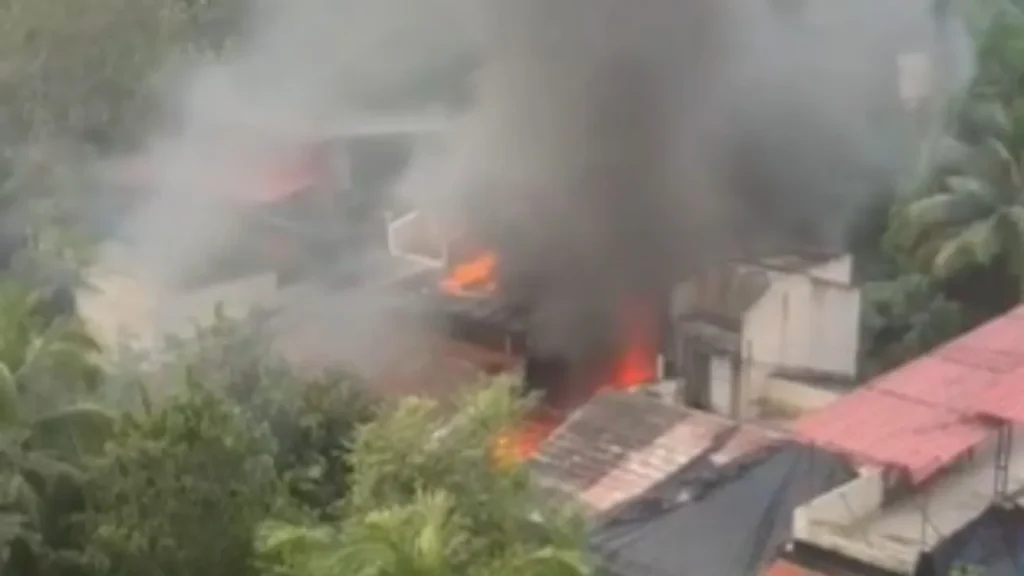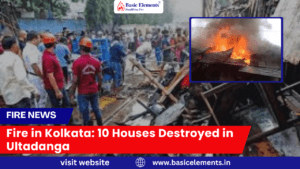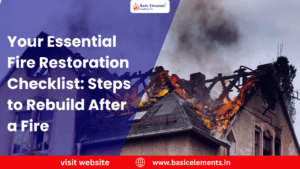Fire at Furniture Market in Delhi: 44 Labourers Rescued
A major fire broke out early Saturday morning in a furniture market in the Nabi Karim area of central Delhi. Swift action by police helped rescue 44 labourers just minutes before the flames spread across the four-storey building.

Fire at Furniture Market in Delhi Early Morning
The fire was reported at 3:20 AM when smoke was seen coming from the ground floor of the building, which was being used as a furniture godown. The labourers were sleeping inside the building when the fire started.
Labourers Rescued as Fire Spread Through the Building
The police found that the only entry point to the upper floors of the building was blocked by a shutter. Reacting quickly, they broke the shutter and opened the gate to reach the second and third floors, where the labourers were trapped.

Swift Action by Police Averted Tragedy
The local police acted swiftly, broke the shutter, and proceeded to the upper floors to rescue the labourers who were asleep,” an official said. Within minutes, the fire had spread throughout the building.
44 Workers Rescued Before Fire Tendors Arrived
Around 44 labourers were successfully evacuated before the fire could fully engulf the building. Firefighters arrived shortly after the rescue operation.
Seven Fire Tenders Deployed to Control the Blaze
The Delhi Fire Service (DFS) sent seven fire tenders to the scene. It took approximately four hours to get the fire under control, according to officials.
Also Read: Madurai Hostel Fire: Tragic Loss of Two Lives Raises Safety Concerns
No Injuries were Reported in the Incident of Fire at Furniture Market in Delhi But Heavy Property Damage
Thankfully, no injuries were reported in the fire, but significant damage was done to the building and the furniture stored inside. The fire serves as a reminder of the need for fire safety, particularly in high-risk commercial areas.
This fire incident at the Furniture Market in Delhi highlights the importance of quick action in emergencies.
In the recent fire at Furniture Market in Delhi, where 44 labourers were rescued from a four-storey building, the presence of advanced fire safety technology could have significantly reduced the risk. A solution like IGNICOP®, an Early Warning Apparatus and Communication System (EWACS), could have played a pivotal role in preventing the fire at the Furniture Market In Delhi from escalating into a more dangerous situation.
Introducing IGNICOP®: A Revolutionary Fire Safety Monitoring Solution
Many fire accidents are occurring these days due to inadequate fire safety measures and the absence of quick alerts, underscoring the urgent need for advanced fire safety solutions. Introducing IGNICOP®, a revolutionary Fire Safety Monitoring Solution, designed to tackle these challenges head-on.
It is a groundbreaking Early Warning Apparatus and Communication System (EWACS) for various infrastructure settings. This innovative system ensures that fire safety systems are always in optimal condition by continuously monitoring fire alarms and pressure levels. It provides instant alerts in the event of any deviations, significantly reducing the risk velocity of fire hazards and ensuring swift response to potential threats.
How IGNICOP® Works:
- Continuous Monitoring: IGNICOP® ensures the ongoing health monitoring of installed fire safety systems, effectively minimizing risk at all times.
- System Status Tracking: The device monitors fire alarms and pressure levels in real-time, providing a comprehensive health assessment.
- Instant Alerts: If any deviation in the fire alarm or pressure levels occurs, IGNICOP® triggers immediate notifications to four stakeholders or first responders through SMS within 5 seconds, followed by phone calls in 10 seconds.
- Dashboard Accessibility: Users can conveniently check the status and monitor multiple sites through the user-friendly Admin Dashboard.
- Central Communication Hub: IGNICOP® acts as a central hub for a robust and scalable fire safety communications system.
IGNICOP®technology and approach to fire safety provide a critical example of how immediate alerts and real-time monitoring can mitigate fire risks and enhance safety protocols.

At Basic Elements, we believe that fire safety should never be compromised. Our innovative solutions, like IGNICOP®, are designed to provide comprehensive protection for critical infrastructure. We specialize in conducting thorough fire safety audits, identifying potential risks, and recommending tailored solutions to mitigate those risks effectively.
Key Benefits of IGNICOP®:
- Saves Lives and Property: Acts as a guardian during fire incidents, protecting lives and assets.
- Reduces Risk Velocity: Swift response reduces damage to critical components.
- Enhances Resilience: Helps businesses effectively respond to fire accidents.
- Mitigates Legal Liabilities: Ensures compliance with industry standards, reducing legal risks.
- Ensures Business Continuity: Minimal downtime promotes seamless operations.
- Promotes Operational Excellence: Contributes to efficiency and excellence.
Basic Elements is a prominent fire safety company based in Hyderabad, India. With a strong focus on providing comprehensive fire protection solutions, they have established themselves as a trusted partner in safeguarding lives and property.
Role of IGNICOP® in Thane commercial building fire incident
In the case of the Thane commercial building fire, an early warning system like IGNICOP® could have made a critical difference. As an Early Warning Apparatus and Communication System (EWACS), IGNICOP® continuously monitors the health of fire safety systems, tracking fire alarms and pressure levels in real time. Had the building been equipped with IGNICOP®, the system would have detected any deviation or malfunction in the fire safety apparatus and instantly alerted stakeholders and first responders within seconds. This proactive alert system would have provided valuable time for evacuation, enabling a swift response to contain the fire before it escalated. By reducing the risk velocity and ensuring immediate action, IGNICOP® could have significantly minimized the damage, ensured safety, and protected both lives and property.







